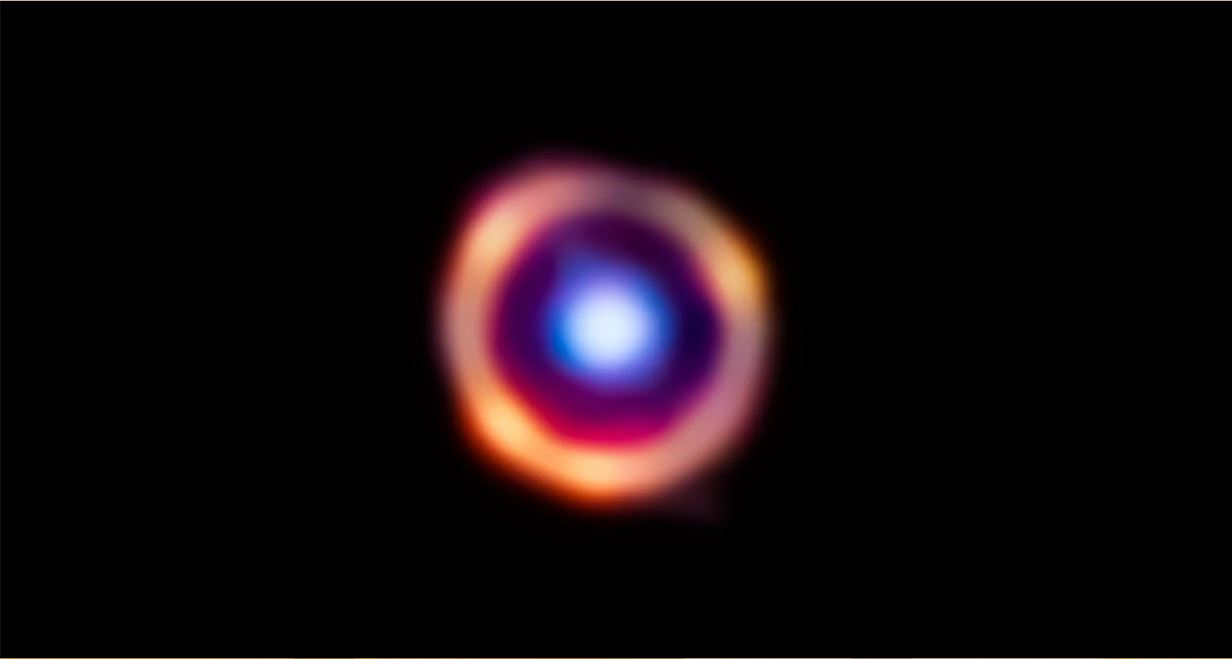James Webb Space Telescope Detects Organic Molecules In Remote Galaxy
A team of international astronomers made a groundbreaking discovery as the James Webb Space Telescope detects organic molecules in remote galaxy. This remarkable finding highlights the capabilities of the Webb telescope in unraveling the intricate chemistry associated with the formation of stars, even during the early epochs of the universe.
Author:Paula M. GrahamReviewer:Rhyley CarneyJun 06, 202312.9K Shares275.8K Views

A team of international astronomers made a groundbreaking discovery as the James Webb Space Telescope detects organic molecules in remote galaxy. This remarkable finding highlights the capabilities of the Webb telescope in unraveling the intricate chemistry associated with the formation of stars, even during the early epochs of the universe. Interestingly, this discovery challenges the long-held belief that "where there's smoke, there's fire," at least when it comes to galaxies.
Led by Justin Spilker, an astronomer from Texas A&M University, the researchers identified these organic molecules in a galaxy situated over 12 billion light-years away. Due to its immense distance, the light captured by the astronomers commenced its journey when the universe was merely 1.5 billion years old, accounting for approximately 10% of its present age.
The galaxy itself was initially detected by the National Science Foundation's South Pole Telescope in 2013 and has since been extensively studied using various observatories, including the Atacama Large Millimeter Array (ALMA) and the Hubble Space Telescope.
In the study published on June 5 in the journal Nature, Justin Spilker emphasizes that the remarkable discovery was made achievable through the synergistic capabilities of the James Webb Space Telescope and a fortuitous occurrence known as gravitational lensing. Gravitational lensing, a phenomenon initially predicted by Albert Einstein's theory of relativity, occurs when two galaxies align almost perfectly from our vantage point on Earth.
As a result, the light emitted by the distant galaxy is stretched and amplified by the foreground galaxy, assuming the form of a circular structure resembling a ring, commonly referred to as an Einstein ring. This gravitational lensing effect played a pivotal role in enabling the detection of the complex organic molecules in the distant galaxy, marking a significant breakthrough in our understanding of the early universe.
“By combining Webb’s amazing capabilities with a natural ‘cosmic magnifying glass,’ we were able to see even more detail than we otherwise could,” said Spilker, an assistant professor in the Texas A&M Department of Physics and Astronomy and a member of the George P. and Cynthia Woods Mitchell Institute for Fundamental Physics and Astronomy. “That level of magnification is actually what made us interested in looking at this galaxy with Webb in the first place, because it really lets us see all the rich details of what makes up a galaxy in the early universe that we could never do otherwise.”
The data gathered by the James Webb Space Telescope revealed a distinct signature of significant organic molecules, reminiscent of smog and smoke. These molecules serve as the building blocks of hydrocarbon emissions on Earth, which are known to be cancer-causing and contribute to atmospheric pollution.
Nevertheless, Justin Spilker emphasizes that the implications of these "galactic smoke signals" are far less catastrophic for the cosmic ecosystems they inhabit. While they share similarities with their terrestrial counterparts, the role and impact of these organic molecules in the cosmic context differ significantly, offering fascinating insights into the complex chemistry involved in the formation of stars and galaxies.
According to Spilker:
“„These big molecules are actually pretty common in space. Astronomers used to think they were a good sign that new stars were forming. Anywhere you saw these molecules, baby stars were also right there blazing away.- Justin Spilker, an assistant professor in the Texas A&M Department of Physics and Astronomy and a member of the George P. and Cynthia Woods Mitchell Institute for Fundamental Physics and Astronomy
According to Justin Spilker, the recent findings from the James Webb Space Telescope suggest that this notion may not hold entirely true in the early universe. The results challenge the traditional belief that "where there's smoke, there's fire" when it comes to galactic phenomena.
“Thanks to the high-definition images from Webb, we found a lot of regions with smoke but no star formation, and others with new stars forming but no smoke,” Spilker added.
Kedar Phadke, a graduate student from the University of Illinois Urbana-Champaign who played a key role in the technical development of the team's Webb observations, highlighted the groundbreaking potential of the telescope in establishing connections across vast cosmic distances. By utilizing the capabilities of the James Webb Space Telescope, astronomers are now able to forge unprecedented links and gain remarkable insights into the mysteries of the universe that were previously inaccessible. The observations made with Webb have opened up new avenues for exploration and understanding, revolutionizing our ability to comprehend the intricacies of space on an unprecedented scale.
According to Phadke's statement:
“„Discoveries like this are precisely what Webb was built to do: understand the earliest stages of the universe in new and exciting ways. It’s amazing that we can identify molecules billions of light-years away that we’re familiar with here on Earth, even if they show up in ways we don’t like, like smog and smoke. It’s also a powerful statement about the amazing capabilities of Webb that we’ve never had before.- Kedar Phadke, a graduate student from the University of Illinois Urbana-Champaign
The team leading this groundbreaking discovery comprises esteemed astronomers, including Jane Rigby from NASA's Goddard Space Flight Center, Joaquin Vieira from the University of Illinois, and numerous other researchers from around the globe. Their collective effort has resulted in a significant milestone for the James Webb Space Telescope, marking its first-ever detection of complex molecules in the early universe.
Justin Spilker, the lead astronomer, views this achievement not as a conclusion but as a starting point for further exploration and scientific breakthroughs. This discovery paves the way for exciting new avenues of research and a deeper understanding of the early universe's chemistry and the processes that drove star formation during that era.
Conclusion
“These are early days for the Webb Telescope, so astronomers are excited to see all the new things it can do for us,” Spilker said. “Detecting smoke in a galaxy early in the history of the universe? Webb makes this look easy. Now that we’ve shown this is possible for the first time, we’re looking forward to trying to understand whether it’s really true that where there’s smoke, there’s fire. Maybe we’ll even be able to find galaxies that are so young that complex molecules like these haven’t had time to form in the vacuum of space yet, so galaxies are all fire and no smoke. The only way to know for sure is to look at more galaxies, hopefully even further away than this one.”
Jump to

Paula M. Graham
Author

Rhyley Carney
Reviewer
Latest Articles
Popular Articles
